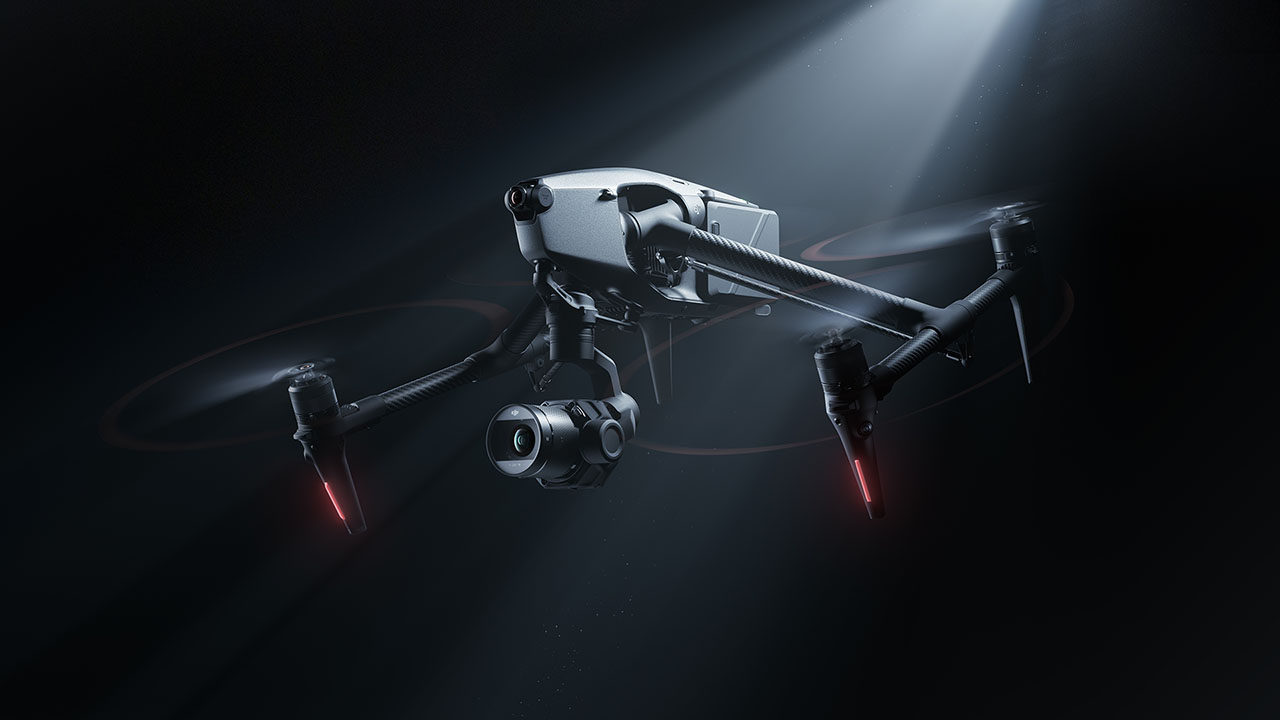
DJI has announced the Inspire 3, a new cinematography focused drone that appears to take things to a new, ahem, high.
The Inspire series has been around since 2015, and it's fair to say that the original changed the game. By today's standards, and, well, even by the standards at the time, the camera on the Inspire 1 was lacking. It suffered from high compression and low dynamic range. However, this changed later on when the X5 camera was announced for it. The trouble was that the X5 was a heavier camera, bringing the Inspire 1's already short flight times down even more. A replacement was needed, and that came in the form of the Inspire 2, which totally transformed things.
The Inspire 2 was a true cinematography drone, with a much improved camera with interchangeable lenses, and a flight platform with vastly improved duration and overall power. In fact, so good was the Inspire 2 that DJI made a short film demonstrating its use as a straightforward camera replacement. This in turn became inspiration for the company to develop the Ronin 4D camera system.
The Inspire 2 was released in 2017, which technologically is a fair old time ago. It's a testament to how good the system is that it has gone this amount of time before being upgraded. But, upgraded it has been: Enter the Inspire 3.
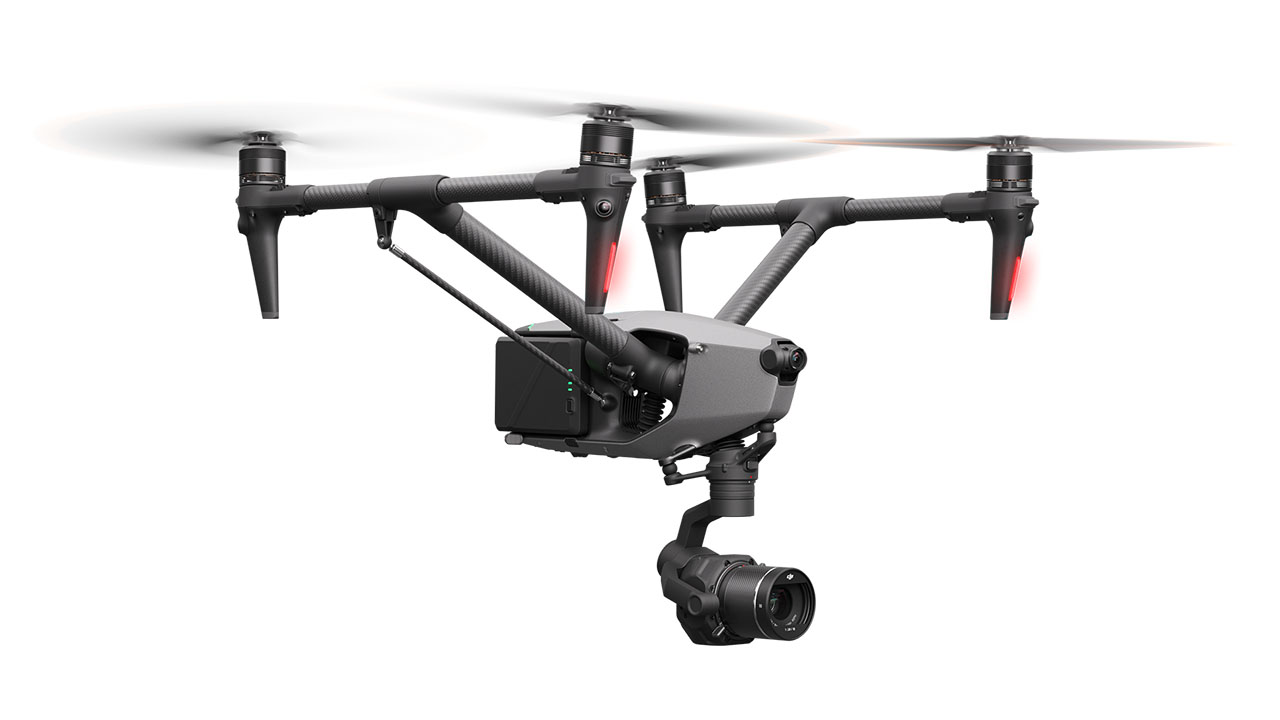
The DJI Inspire 3. Image: DJI.
DJI Inspire 3 main features
Let's begin with the airframe design. So much has been improved here that it's difficult to know where to begin. The Inspire 3 is a ground up redesign, although the most familiar feature of the Inspire series is still there, the retractable landing gear. It does have a purpose beyond just looking cool though. With the landing gear raised, the Inspire 3 can rotate its camera 360 degrees without the flight frame being visible, while when it's lowered, the drone can fly faster and more efficiently with longer runtimes. Lowering the landing gear also opens up the ability for a forward upwards tilt of the camera by 80-degrees.
The most noticeable addition to the Inspire 3 is the FPV camera with 161-degree field of view. This features a 1/1.8-inch night-vision sensor with 3μm pixel size and can send up to a 1080p/60fps live feed signal to a base station.
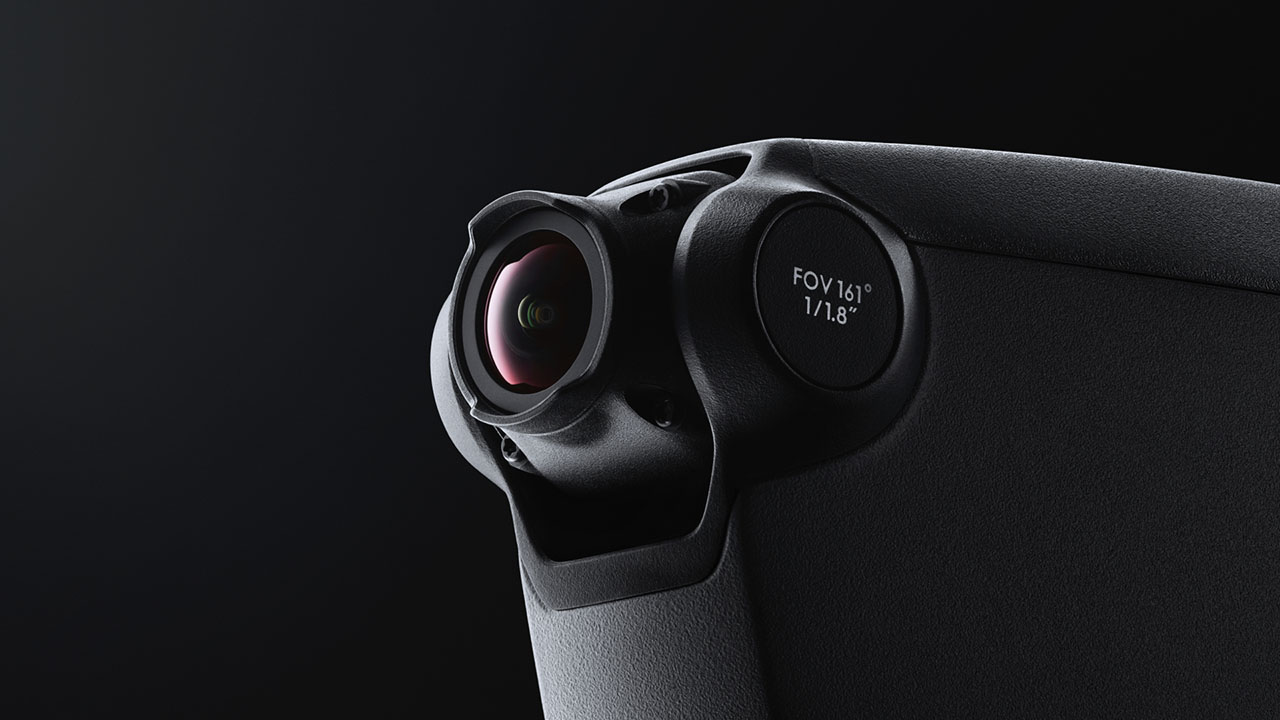
The new FPV camera on the Inspire 3. Image: DJI.
The platform now features nine separate obstacle avoidance sensors. Each can be disabled or tuned to specific distance requirements. They can also be turned off altogether for special situations, while retaining a visual display of obstacle proximity and an alarm.
The Inspire 3 features a built-in 3 GNSS positioning system (GPS + Galileo + BeiDou) that's powered by dual-layered ceramic RTK antennas. Perhaps the most staggering part of the Inspire 3's positioning system is that with the addition of a D-RTK 2 Mobile Station the drone can be placed with an accuracy of 1cm. This means that if you are filming indoors, or need repeatable shots outdoors where positionable accuracy is needed, the system doesn't have to rely on satellites. This is important, because indoor flight previously required good manual control, whereas this opens up many more possibilities for indoor shooting on large film sets with pinpoint accuracy.
For repeatable shots, DJI has included Waypoint Pro, which allows the drone to fly precise routes time after time, or to simulate grip equipment like dollies or cranes. Spotlight Pro gives the system the ability to track objects or people with the camera, freeing up the pilot to focus on safe flying.
Control-wise, the Inspire 3 allows dual control with video transmission up to 15km away in HD, and 5km in 4K, opening up the possibility for 4K live streaming. Latency is around 90ms. The dual control system allows the gimbal operator and pilot to be in completely different locations, while control redundancy allows the gimbal operator to take control of the aircraft should there be a problem with the pilot's controls.
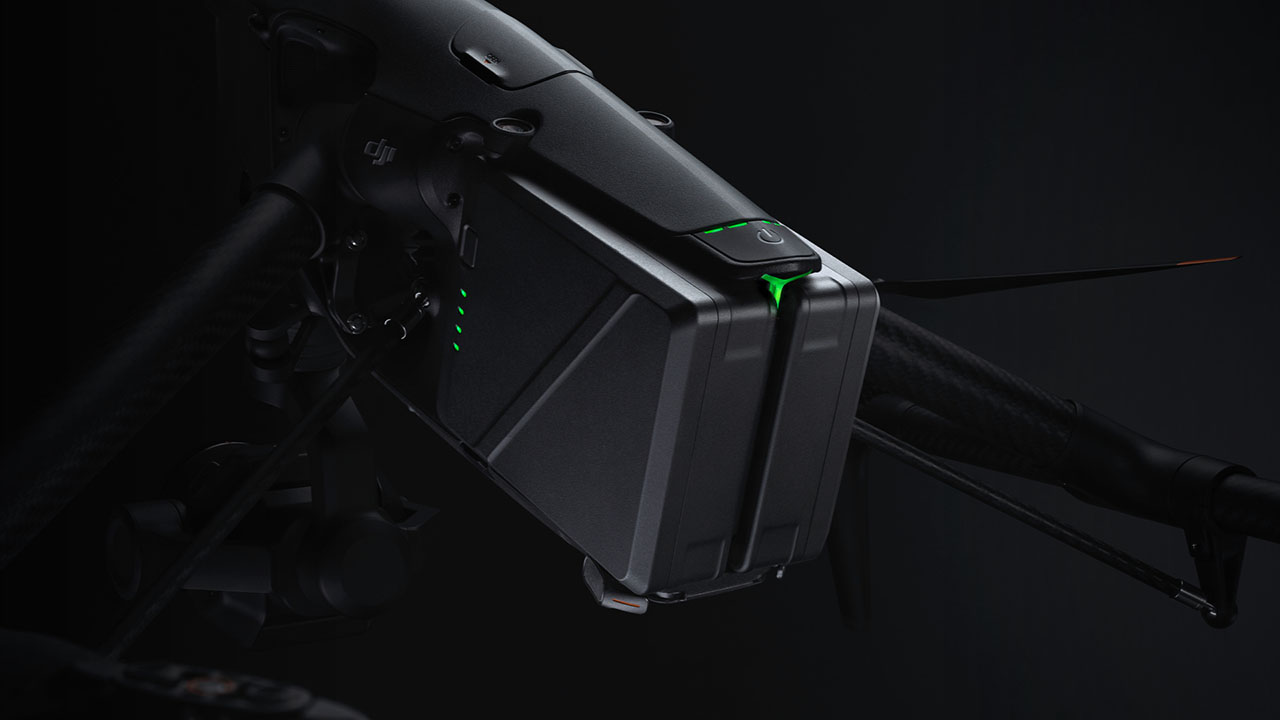
The dual hot swappable battery system gives up to 28 minutes of flight time. Image: DJI.
Power is supplied by dual, hot swappable TB51 batteries, giving up to 28 minutes of flight time. Performance of the aircraft has been increased giving a flight speed of up to 94km/h, 8m/s ascent and descent speed and a dive speed up to 10m/s
DJI Inspire 3 camera
The camera on the Inspire 3 is a huge upgrade from the Inspire 2. The Zenmuse X9-8K Air camera is, as the name suggests, an 8K resolution camera utilising a full-frame sensor. Internal recording using CinemaDNG is possible in 8K up to 25fps, while ProRes RAW mode opens up 75fps in 8K. In 4K mode it's possible to shoot ProRes RAW at up to 120fps without a crop.
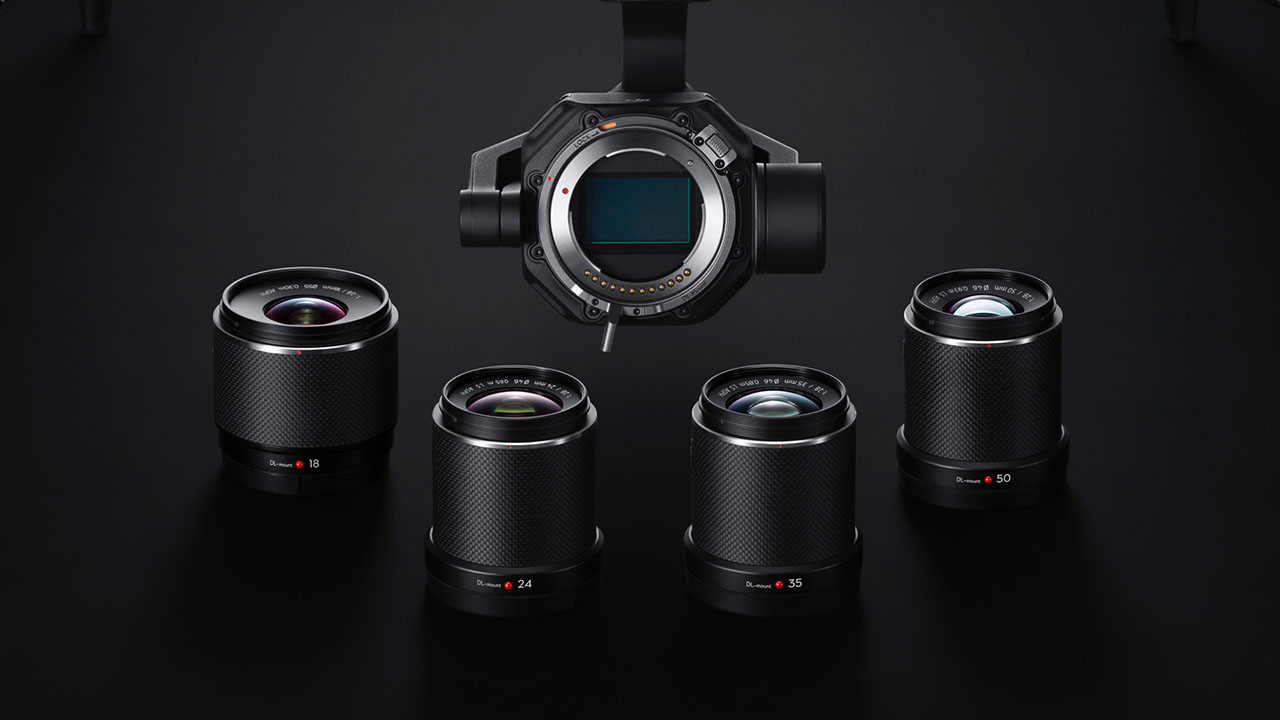
The Zenmuse X9-8K Air camera with a selection of lenses. Image: DJI.
As is the norm these days, the X9 supports dual native ISO. This varies depending on the mode. In full frame at 30p or below it offers EI 800/4000. Above 30fps it supports EI 320/1600. DJI claims that the system is capable of 14+ stops of dynamic range, and can utilise new lenses designed for the system, including an 18mm f/2.8 ultra-wide, and a new telephoto lens designed for 8K shooting. Although DJI hasn't disclosed the focal length at this time. The system is compatible with all other DL mount lenses, and the new glass will also fit on both the Inspire 2's camera, and the Ronin 4D.
DJI also supplies a DJI PROSSD 1TB that offers up to 1100MBps write speed and up to 900MBps read speed. Anyone who has used the Ronin 4D knows that this is a great SSD system, including a USB-C port on its body for easy footage transfer.
Conclusions
So, how much does all this cost? Well, the Inspire 3 is most certainly a very serious cinematography device, and this is reflected in the price. The base system, which includes the X9-8K Air camera, RC Plus remote controller, six TB51 intelligent batteries, charging hub, PROSSD 1TB, trolley case, three foldable quick-release propellers, lens carrying box, along with a few other things, will set you back €14,999 / £13,419. The optional D-RTK 2 Mobile Station adds an additional €2,950 / £2700 to the price. Then you'll need to add yours lenses, ND filters etc on top of that.
In conclusion, the Inspire 3 looks like it will be a superb tool for professional drone cinematographers who are already in demand for high-end productions and can make it pay. While the cost places the Inspire 3 well and truly within 'dream' territory for most hobbyists, it is a glimpse of the technologies and capabilities that will eventually filter down over the coming years. In short, it looks extremely impressive indeed, and we are currently making our way through the UK drone law minefield to see if we can make a review of the system possible.
The Inspire 3 will be available from June 2023.
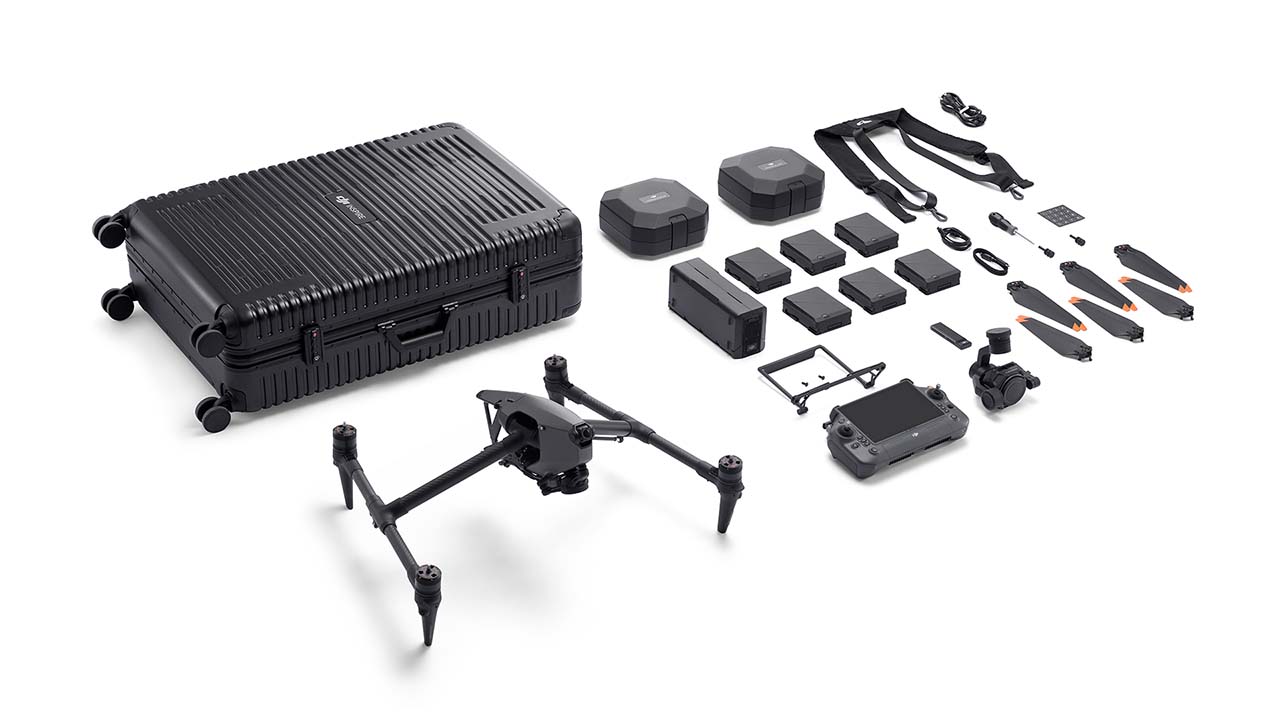
Tags: Production Drones cinematography


Comments